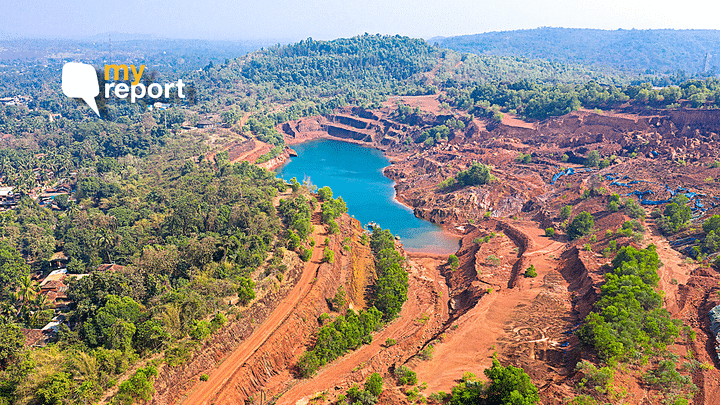Since 2014, I have been living a part of the year in Goa. The 2018 floods of Kerala was a wake-up call to the regions along the Western Ghats. It sounded the alarm against the vulnerabilities of an ancient ecosystem. It pushed me to study the impact of human activities on Goa's delicate water ecosystem. As a part of the research, I studied the effects of mining on the availability of ground and surface water and its long-term effects on the climate.
Goa is a coastal state and faces water issues due to climatic extremes like tidal erosion and depression. However, humans’ ‘development activities’, like mining, tourism, and mega-housing projects in catchment areas, have escalated these troubles.

Hilly midlands in Goa are rich in iron ore and manganese ore and mining these have wreaked havoc on the rich biodiversity of the state. This is fuelled by a lack of adequate monitoring and control mechanisms.
A shot of Pissurlem Village shows how the forest cover was removed for mining.
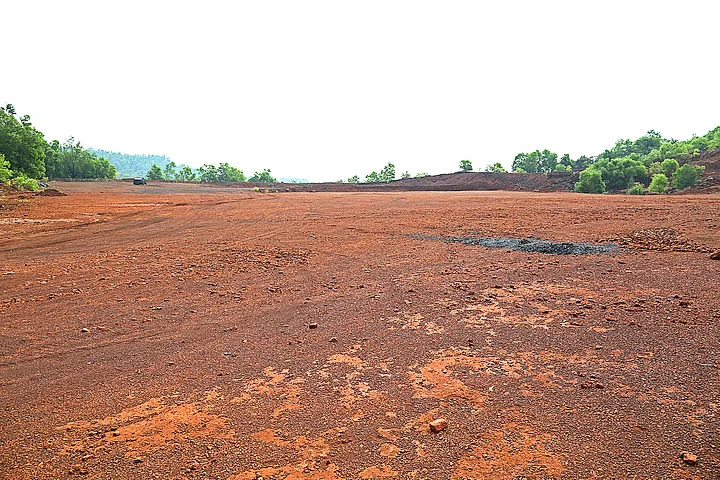
Further, mining for iron has created many irreversible environmental issues, that are exacerbated by the removal of vegetation and topsoil, and mountains of landfill waste. Deforestation, climatic change, soil erosion, air and water pollution are suffered by the local population as a consequence.
Additionally, this increases overall temperature and affects the rainfall pattern, too. “Destruction of forest cover is changing the weather condition dramatically here in Goa,” says Ramesh Gauns, a pioneering mining and environment activist.
There has been ample research (TERI, 1998 and NEERI, 2009) on the effects of mining activities on the river-water quality. Deepening mines below groundwater level has resulted in loss of recharge area of wells and springs, thereby affecting groundwater availability in many areas.
At a mining pit at Shirgao Village, mining activity was shut down and mine abandoned without closing the pit after a Supreme Court order in 2018. The wells of Shirgao village are dry and groundwater collects in the mine, but it is of no use to the villagers as the impounded water is sterile and biologically dead.
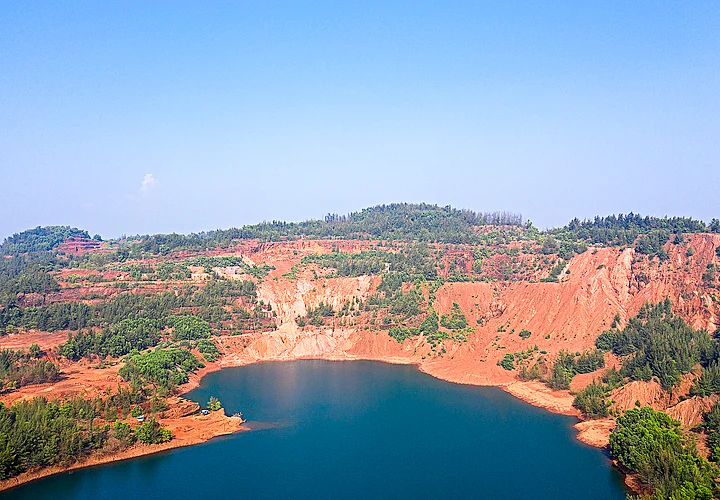
Similarly, the Bicholim mine site was abandoned without restoration according to Mine Closure Policy of 2003. On the left of the pit lie mounds of mining waste.
The wells of Bicholim Village have dried up and waterbodies are still polluted. As a result, Bicholim town and neighbouring villages are as thirsty as they were while the mines were operational.
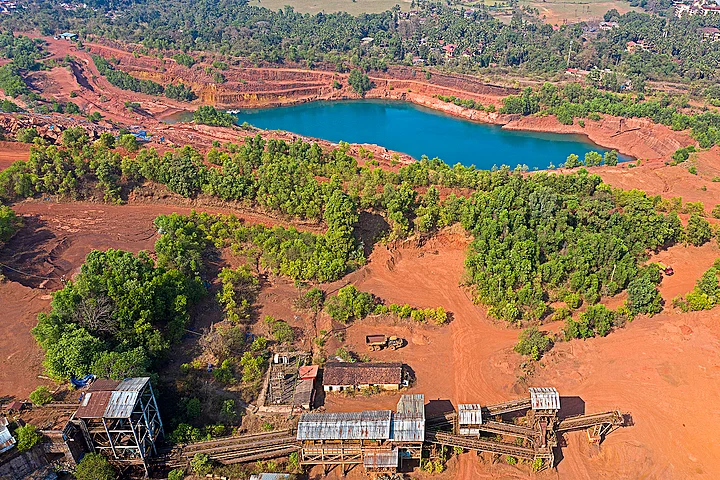
How are waterbodies polluted due to mining? An aerial view of the landfill of the Bicholim mine is self-explanatory. Mining waste is piled at a slope steeper than 30 degrees, which during monsoon time, makes its way into water bodies and fields.

In the following picture, mounds of mining waste are visible on the right. On the left lies Lamgaon Village and its farms, waiting for water to be made available for irrigation. Once famous for cashew nut and betel nut plantations, this area has its fields flooded with silt since the floods of 2000. Villagers have long lost their livelihood and still await their compensations and de-siltation of fields.
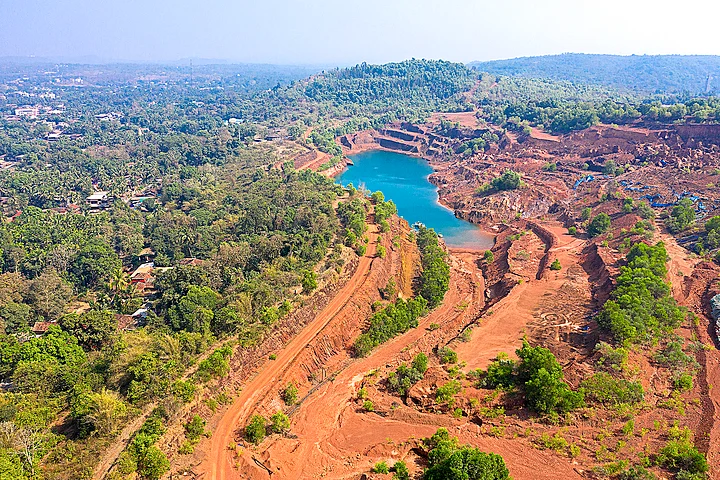
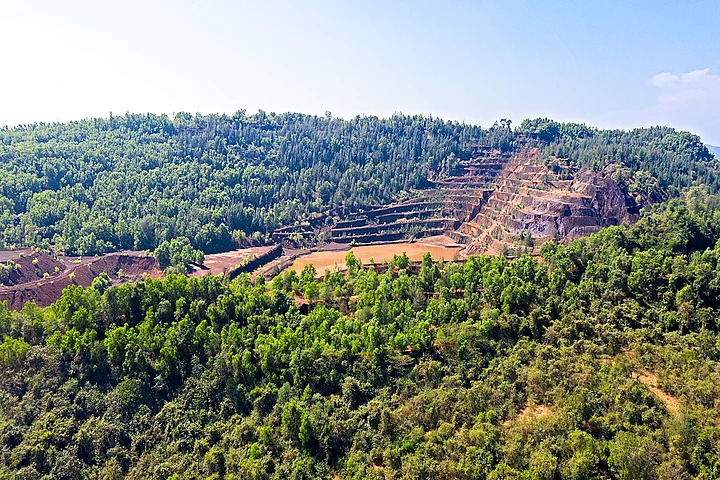
Soil Infertility and Acidic Discharge
The acidic discharge from the mining pits and mining-waste heaps is called acid mine drainage. Toxic metals drain into water bodies during monsoon run-offs. Acid mine drainage is impossible to stop once it begins and can cause indefinite damage to water sources and soil.
Anti-mining activist Hanumant Parab from Pissurlem, who wants to start farming in his village, says this silted soil has lost its fertility and water-holding capacity. Since the floods of 2000, fields have become infertile and fallow. No cultivation of these lands has been possible since then.

For growing paddy, the fields are usually filled with water just before the monsoon to allow the seeds to germinate. Later, this extra water is channelled to the streams. Now, the fields in the vicinity of mines remain waterlogged and the germinated seeds rot, destroying the paddy crop.
Sustainable mining requires mining industries to respect and appreciate the need and value of biodiversity the local people living in mining zone have. They need to work within the given law.
“De-silt and restore the lake and other water bodies. De-silt our farms according to the law. Give us our livelihood back. We have no problem if mines work in accordance to the law, but first restoration of the damage done must be fulfilled.”Sakaram Pednekar, farmer from Mayem Village
For example, a freshwater lake, which supplied water to the Pissurlem, was fed by a perineal natural spring that dried up two decades ago as the flow of water was cut off by mining activity.
As the mining activity continued below groundwater level, all wells and springs dried up. The lake can be seen contaminated with mining waste, mining silt and weeds.
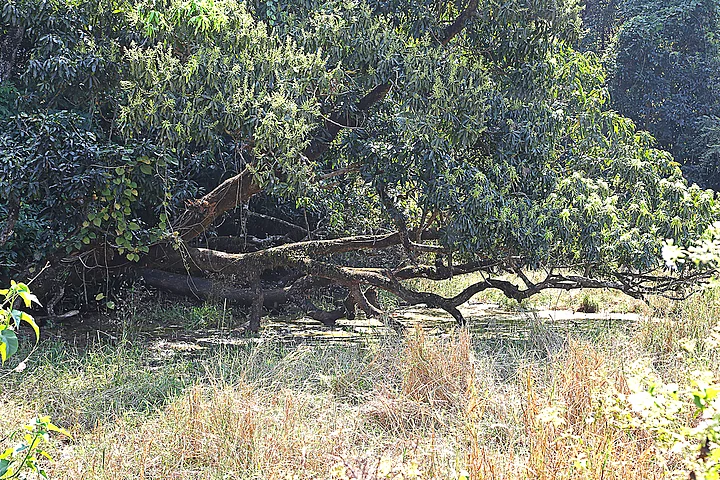
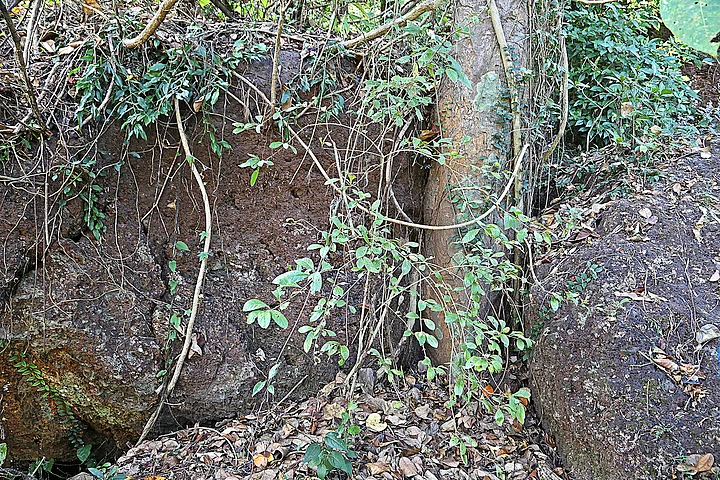
Other mining pits at Pissurlem have had the same fate. Deulem mining pit’s rehabilitation, reclamation and land restoration are still pending. The same is the case for Gulliem and Gaval mines. Meanwhile, villagers of Pissurlem try and find solutions to the grave water crisis they live in every day.
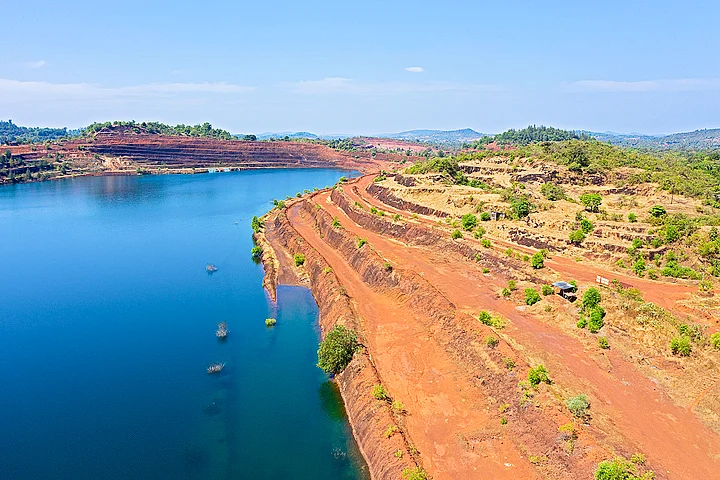
Around Gulliem and Gaval mines, mother nature is claiming back what belongs to her. The green cover is returning wherever possible.
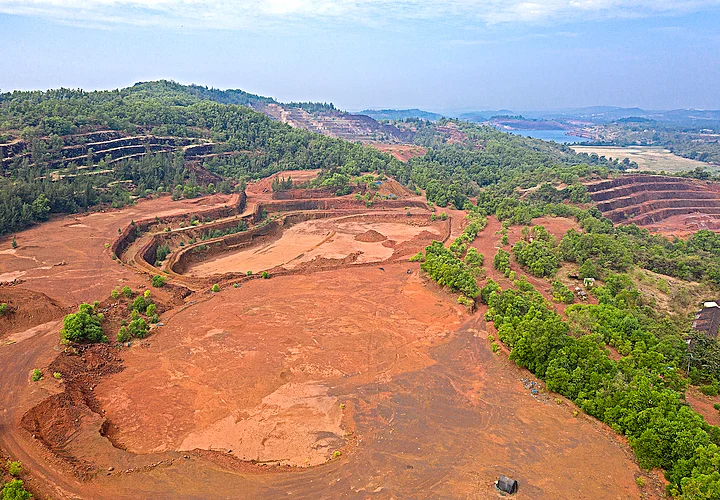
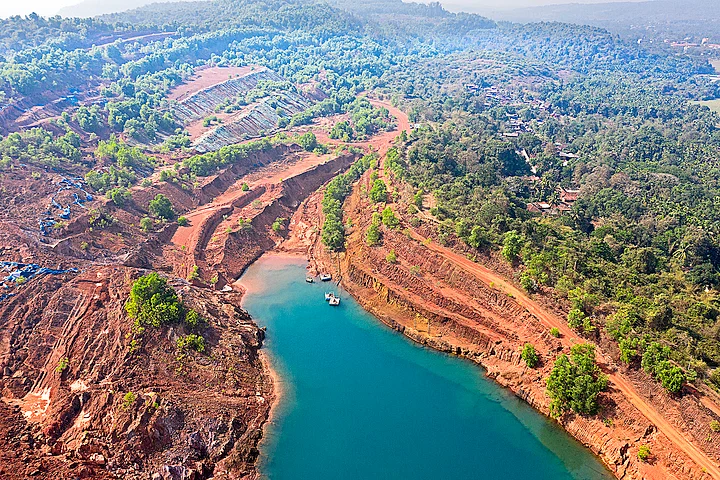
“In Shirgaon, 76 wells have gone dry and in Pissurlem, 80 wells have dried up. Hundreds of springs have gone dry in the mining belt. Fertile paddy fields have turned into a wasteland due to siltation and overburden runoffs. There has been no cultivation possible here for more than 15 years,” notes Ramesh Gauns.
The village of Shirgao won a court case at the Bombay High Court after 12 long years. The Court directed the District Mineral Foundation, Vedanta, Chowgule and Timblo to pay a sum of 40 million rupees for restoring the fields. The drainage network was de-silted using heavy machinery. This has given hope to the other villages fighting for the same cause.
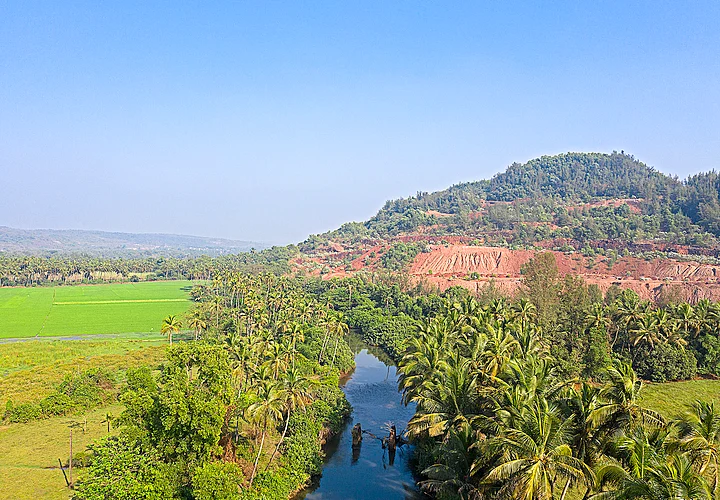
In addition to green pastures, de-silted and restored channels of the river are lined with an array of green coconut trees in Shirgao today. The old temple, built on the edge of the mining pit, no longer witnesses trucks loaded with ore, going up and down the roads.
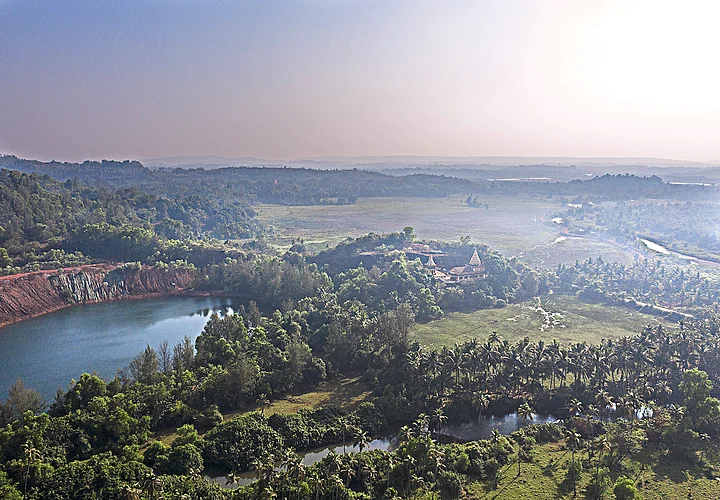
On the contrary, there is a mad rush of the barges carrying iron ore to the docks via Mandovi river, as iron ore seeks an all-time high price in international markets. This is a reminder that there is lot left to be achieved.

“Where ever there is a mine, there is destruction and deforestation,” Gauns concludes.
(The author is a fine arts photographer based in Delhi. All 'My Report' branded stories are submitted by citizen journalists to The Quint. Though The Quint inquires into the claims/allegations from all parties before publishing, the report and the views expressed above are the citizen journalist's own. The Quint neither endorses, nor is responsible for the same.)
(At The Quint, we are answerable only to our audience. Play an active role in shaping our journalism by becoming a member. Because the truth is worth it.)
